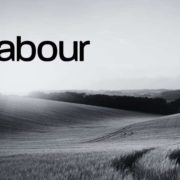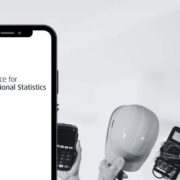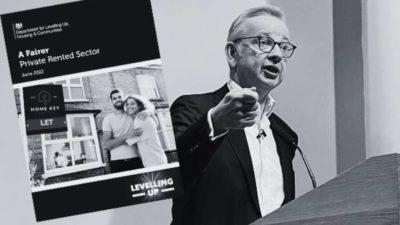In December, the cost of the average UK home was £281,272, a fall on the previous month of 1.5%, with annual growth slowing to +2% (from +4.6%).
However, the fall in December was lower than the monthly decline of 2.4% recorded in November, even taking into account seasonal slowdown driven by the festive period.
As we’ve seen over the past few months, uncertainties about the extent to which cost of living increases will impact household bills, alongside rising interest rates, is leading to an overall slowing of the market.
The housing market was a mixed picture in 2022.
We saw rapid house price growth during the first six months, followed by a plateau in the summer before prices began to fall from September, as the impact of cost of living pressures, coupled with a rising rates environment, began to take effect on household finances and demand.
These trends need to be viewed in the context of historic prices. The cost of the average home remains high – greater than it was at the start of 2022 and over 11% more than house prices at the beginning of 2021.
The first half of last year was a very strong period for sellers, between January 2022 and August 2022, the average cost of a home rose by over £17,000 to £293,992 (growth of 6%), setting a new record high.
As we enter 2023, the housing market will continue to be impacted by the wider economic environment and, as buyers and sellers remain cautious, we expect there will be a reduction in both supply and demand overall, with house prices forecast to fall around 8% over the course of the year.
It’s important to recognise that a drop of 8% would mean the cost of the average property returning to April 2021 prices, which still remains significantly above pre-pandemic levels, said Kim Kinnaird, Director, Halifax Mortgages.
Nations and regions house prices
All nations and regions saw annual house price inflation, although the rate of growth has slowed.
On an annual basis, the North East saw the greatest slowdown in growth, with annual house prices rising by +6.5%, compared to +10.5% the prior month. Average house prices in the region are now £169,980.
Eastern England, West Midlands and Wales experienced the smallest falls in growth rate.
Those buying in the East of England will now pay an average £337,215 (growth rate +5.5% vs +7.2% in November), while in the West Midlands average properties now cost £250,965 (growth rate +7.3% vs +9.1% in November).
The average home in Wales is now £217,547, with annual growth now +6.1% (down from +7.7% the prior month).
Those buying in Scotland will find an average home now costs £200,166, with the second greatest slowdown in the annual growth in the UK, now +3.5% (from +6.4% last month).
Properties in Northern Ireland are up +7.1% year-on-year, lower than the +9.1% last month, with average homes now costing £183,825.
The cost of an average home in London in December was £541,239, a growth of +2.9% annually, compared to 5.0% last month.
| Average house price | Monthly change | Quarterly change | Annual change |
|---|---|---|---|
| £281,272 | -1.5% | -2.5% | +2.0% |
Housing activity
HMRC monthly property transaction data shows UK home sales increased in November 2022.
UK seasonally adjusted (SA) residential transactions in November 2022 were 107,190 – up by 0.2% from October’s figure of 107,010 (up 4.3% on a non-SA basis).
Quarterly SA transactions (September-November 2022) were approximately 3.3% higher than the preceding three months (June 2022 – August 2022).
Year-on-year SA transactions were 13.3% higher than November 2021 (12.1% higher on a non-SA basis). (Source: HMRC)
Latest Bank of England figures show the number of mortgages approved to finance house purchases decreased in November 2022, by 20.4% to 46,075.
Year-on-year the November figure was 33.2% below November 2021. (Source: Bank of England, seasonally-adjusted figures)
The November 2022 RICS Residential Market Survey results show overall activity across the sales market continues to weaken.
New buyer enquiries was in a negative net balance for a seventh month at -38%, compared to -53% previously.
Agreed sales had a net balance of -35% (-45% previously) and new instructions returned a net balance of -9% (previously -16%). (Source: Royal Institution of Chartered Surveyors’ (RICS) monthly report).
Mark Harris, chief executive of mortgage broker SPF Private Clients, comments:
“Annual house price growth continues to slow, as activity softens and the market gradually returns to something closer to what we were used to pre-pandemic.
Mortgage rates continue to float gently downwards with a number of lenders, including Nationwide and TSB, making further reductions to fixed-rate mortgages this week.
While another rate rise is expected next month, medium and long-term rates continue to fall, allowing lenders to be more aggressive in their pricing.
The market reacted favourably to the Prime Minister’s inflation-cutting pledge and we expect five-year fixed rates to begin to look better value, although the era of sub-1 per cent deals is over.”
Jeremy Leaf, north London estate agent and a former RICS residential chairman, comments:
“Housing market activity dropped and sales are taking longer as buyers reclaim the balance of power due principally to the cost of living and interest rate rises.
Prices may soften further before mortgage costs fall despite recent modest reductions as concerns about job security increase.
Lack of supply means prices are unlikely to fall sharply as we have found many buyers waiting until early 2023 to see if mortgage rates settle before deciding to move.”
Gareth Lewis, commercial director of property lender MT Finance, comments:
“The Halifax data is another indication that consumers are unsettled, which makes them unwilling to pay over the odds for a property. At the start of 2022, purchasers would generally be prepared to pay the increased price as lack of supply was such an issue.
However, with the inflationary pressures now being felt, buyers are less prepared or less able to stretch themselves even if they wanted to, which will inevitably put downwards pressure on house prices in the new year.”
Tom Bill, head of UK residential research at Knight Frank, comments:
“The first rule for anyone predicting the trajectory of house prices in 2023 should be to ignore any data from the chaotic final quarter of 2022.
The latest data shows two things are happening at the same time. First, the effect of the mini-Budget is working its way through the system, which means that monthly declines are narrowing.
At the same time, an annual fall in house prices appears imminent, underlining how the lending landscape has changed irrespective of the mini-Budget.
As rates normalise, buyers will increasingly recalculate their financial position and house prices will come under pressure.
We expect a 10% decline over the next two years, taking them back to where they were in mid-2021.”
Avinav Nigam, cofounder of real estate investment platform, IMMO, comments:
“This slight fall in house-price growth was expected, as momentum has slowed, reflecting economic confidence and rising interest rates from 2022.
Buying property is more expensive due to higher rates.
The stress tests applied by banks are also more stringent.
The result is that many who had hoped to purchase using mortgage finance will no longer be able to, with a disproportionate impact on younger and poorer households.
As it becomes harder and more expensive to buy, demand for rental properties continues to grow.
At the same time, rental listings are down significantly (rental supply is down 38% on the 5-year average, according to Zoopla’s latest report) as landlords exit the market following an increase in the cost of complying with more regulations.
The opportunity for professional providers of safe, quality and affordable rental housing for the UK is increasingly clear.”
Ben Woolman, Director at Woolbro Group, comments:
“Despite falling house prices, the coming months will be very much a case of one step forward and two steps back for first-time buyers.
In most cases, higher mortgage rates mean the savings to be gained from Britain’s cooling housing market will be all but wiped out.
At the same time, those saving up for a deposit on their first home are having to grapple with higher private rent costs, energy bills and food prices.
Combined with the end of the Government’s hugely popular Help to Buy scheme, the Champagne is very likely to be kept on ice for many hopeful first-time buyers throughout 2023.
Further support for those trapped in the private rental market is now well overdue.
The clear first step is to bring planning system reform back onto the table, given that it is easily the single greatest obstacle to new homes being built in this country.
With a general election now approaching the horizon, the Government simply cannot afford not to act on the housing crisis if it wants to win over votes of ‘Generation Rent’.”
Director of Benham and Reeves, Marc von Grundherr, comments:
“For the last two years, many buyers have been borrowing beyond their means to offer above the odds and beat other buyers to the punch in what has been an extremely competitive market.
But with increasing mortgage rates adding to the cost of living squeeze, they are no longer acting with the same degree of over-exuberance and this is dampening the house price highs seen throughout much of the pandemic.
However, what we’re currently seeing is an extremely over-inflated market retract, rather than collapse.
So while there may still be a period of correction to come, the overarching expectation is that stability will return sooner, rather than later.”
Managing Director of HBB Solutions, Chris Hodgkinson, comments:
“It’s clear that the Bank of England’s aggressive approach to curb inflation via nine consecutive base rate hikes is now starting to impact the property market, with mortgage approvals starting to slide, bringing property values down in the process.
This reduction is due to the increasing cost of borrowing and with mortgage rates climbing, buyers are now finding that they can no longer overstretch financially to climb the ladder and are having to adjust their expectations accordingly.”
James Forrester, Managing Director of Barrows and Forrester, comments:
“As it stands, we’re witnessing a period of adjustment as buyers reassess their purchasing power and sellers come to terms with what their home can fetch in current market conditions.
For those hoping to sell, there remains a strong level of buyers within the market who are still willing to pay a good price.
However, a level headed approach when valuing your home is key if you wish to attract them.”
Jason Ferrando, CEO of easyMoney comments:
“We’re now seeing the meteoric rates of house price growth seen throughout the pandemic start to subside.
But while some home sellers may see the cream cut from the top where the value of their home is concerned, they’re certainly not losing the whole pint of milk.
Of course, the silver lining to a cooling market is that many home movers will still be looking to sell and so it presents an abundance of opportunity for homebuyers and investors alike to grab a bargain.”




















Comments